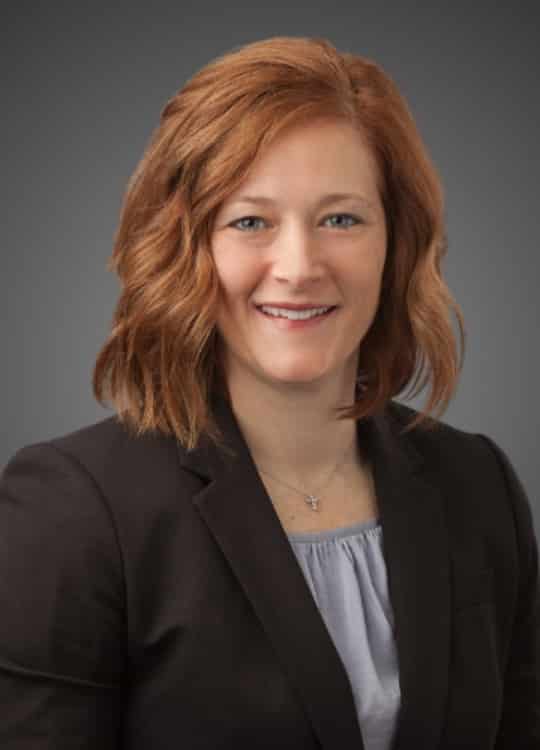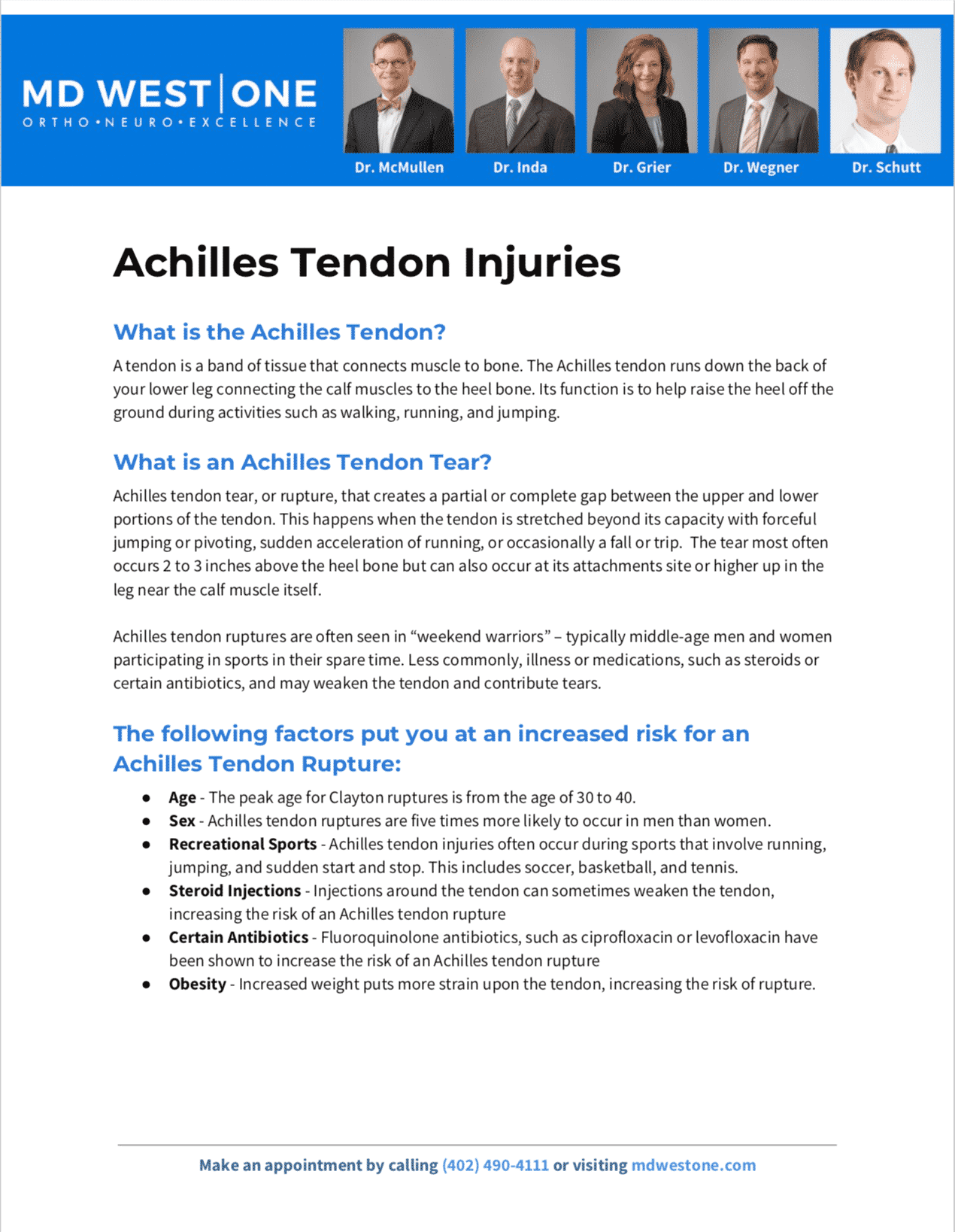Are you suffering from potential Haglund's Deformity?
The Omaha Foot & Ankle Specialists at MD West ONE are able to properly diagnose and treat Haglund's Deformity through both surgical and non-surgical treatments. If you have the following symptoms, you may want to make an appointment with one of our Board Certified Specialists.
- A noticeable bump on the back of the heel
- Pain in the area where the Achilles tendon attaches to the heel
- Swelling in the back of the heel
- Redness near the inflamed tissue
Meet MD West ONE's foot and ankle specialists and learn more about how they treat Haglund's Deformity.
Haglund's Deformity Causes, Treatments & Surgery
What is Haglund's Deformity?
Haglund's Deformity is a bony enlargement on the back of the heel. The soft tissue near the Achilles tendon becomes irritated when the bony enlargement rubs against shoes. This often leads to painful bursitis, which is an inflammation of the bursa (a fluid-filled sac between the tendon and bone).
The following factors put you at an increased risk for Haglund's Deformity:
Haglund’s Deformity is often called “pump bump” because the rigid backs of pump-style shoes can create pressure that aggravates the enlargement when walking. In fact, any shoes with a rigid back, such as ice skates, men’s dress shoes, or women’s pumps, can cause this irritation.
To some extent, heredity plays a role in Haglund’s Deformity. Inherited foot structures that can make one prone to developing this condition include:
-
A high-arched foot
-
A tight Achilles tendon
-
A tendency to walk on the outside of the heel.
Ways to Decrease Your Risk of Developing Haglund's Deformity:
- Wearing appropriate shoes; avoid shoes with a rigid heel back
- Using arch supports or orthotic devices
- Performing stretching exercises to prevent the Achilles tendon from tightening
- Avoiding running on hard surfaces and running uphill.
DIAGNOSIS
After evaluation the patient's symptoms, the foot and ankle surgeon will examine the foot. In addition, x-rays will be ordered to help the surgeon evaluate the structure of the heel bone.
NON-SURGICAL TREATMENT OPTIONS
Non-surgical treatment of Haglund’s Deformity is aimed at reducing the inflammation of the bursa. While these approaches can resolve the pain and inflammation, they will not shrink the bony protrusion. Non-surgical treatment can include one or more of the following:
- Medication. Oral nonsteroidal anti-inflammatory drugs (NSAIDs), such as ibuprofen, may be recommended to reduce the pain and inflammation.
- Ice. To reduce swelling, apply an ice pack to the inflamed area, placing a thin towel between the ice and the skin. Use ice for 20 minutes and then wait at least 40 minutes before icing again.
- Exercises. Stretching exercises help relieve tension from the Achilles tendon. These exercises are especially important for the patient who has a tight heel cord.
- Heel lifts. Patients with high arches may find that heel lifts placed inside the shoe decrease the pressure on the heel.
- Heel pads. Pads placed inside the shoe cushion the heel and may help reduce irritation when walking.
- Shoe modification. Backless or soft backed shoes help avoid or minimize irritation.
- Physical therapy. Physical therapy modalities, such as ultrasound, can help to reduce inflammation.
- Orthotic devices. Custom arch supports control the motion in the foot.
- Immobilization. In some cases, casting may be necessary.
SURGICAL TREATMENT OPTIONS
If non-surgical treatment fails to provide adequate pain relief, surgery may be needed. The foot and ankle surgeon will determine the procedure that is best suited to your case. It is important to follow the surgeon's instructions for post-surgical care.
Frequently Asked Questions?
What is the long-term outlook?
With proper treatment, your pain should go away. While some people may see their symptoms reappear, taking the precautions listed above will help reduce your chances of getting Haglund's Deformity again.
When the bony lump of Haglund's Deformity rubs against shoes, it can cause other nearby tissues to become inflamed.
That can lead to complications, including:
- Bursitis: Inflammation of the bursa, a fluid-filled sac that cushions a tendon against bone, can cause swelling and tenderness.
- Achilles tendonitis: Symptoms of Achilles tendonitis such as pain and swelling can occur a few centimeters above the area where the tendon attaches to the back of the heel.
AMERICAN ORTHOPAEDIC FOOT & ANKLE SOCIETY
All of the foot and ankle surgeons in the practice are recognized members of the American Orthopaedic Foot & Ankle Society. It is the oldest and most prestigious medical society dedicated to the foot and ankle. The mission of the society is to advance science and practice of foot and ankle surgery through education, research, and advocacy on behalf of patients and practitioners. These physicians dedicate their time and energy to improving the patient experience and their knowledge in their field. For more information visit http://www.aofas.org.
MD West ONE Foot & Ankle Specialists:
The Foot & Ankle Specialists are all Board Certified and Fellowship-Trained, meaning they’ve focused their education, training and research on orthopaedic surgery of the foot and ankle.






